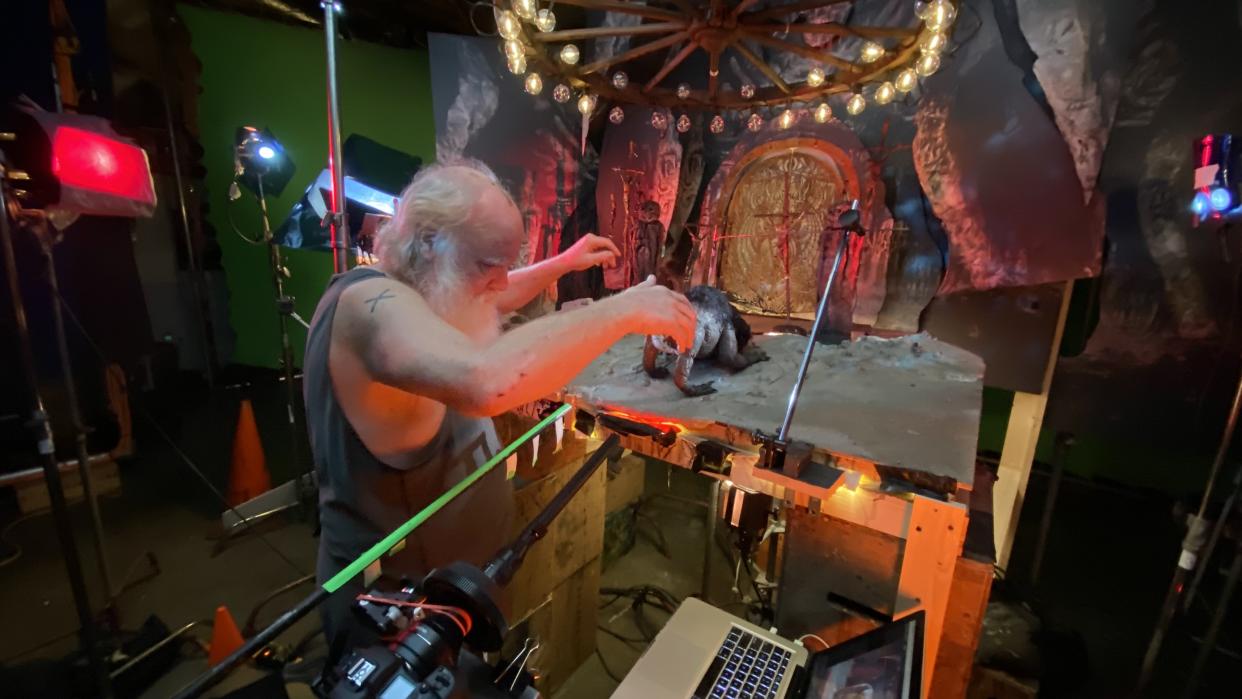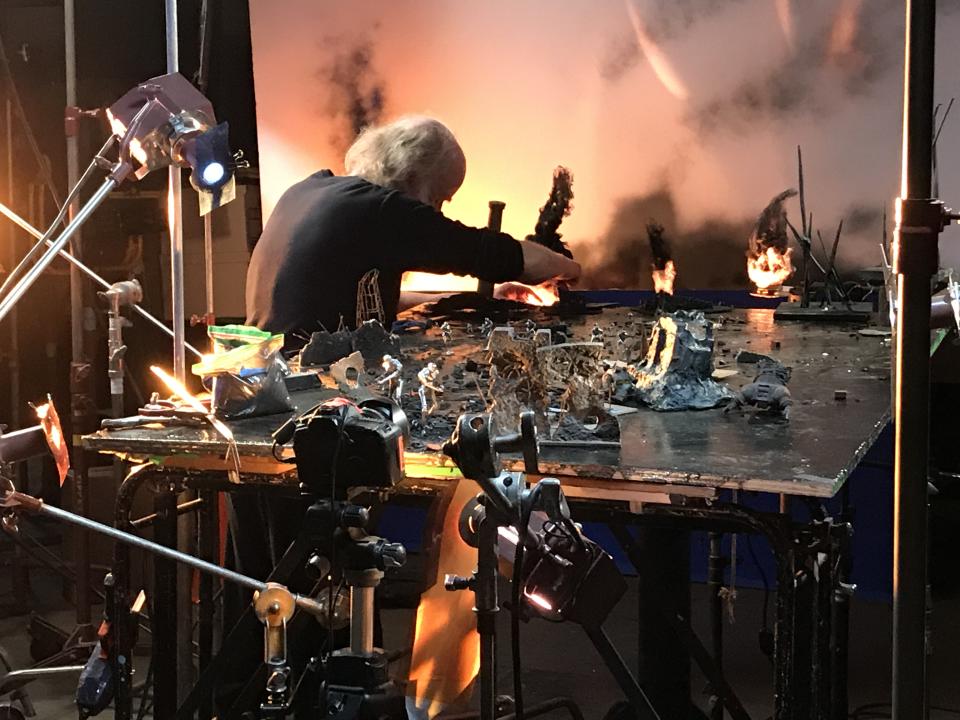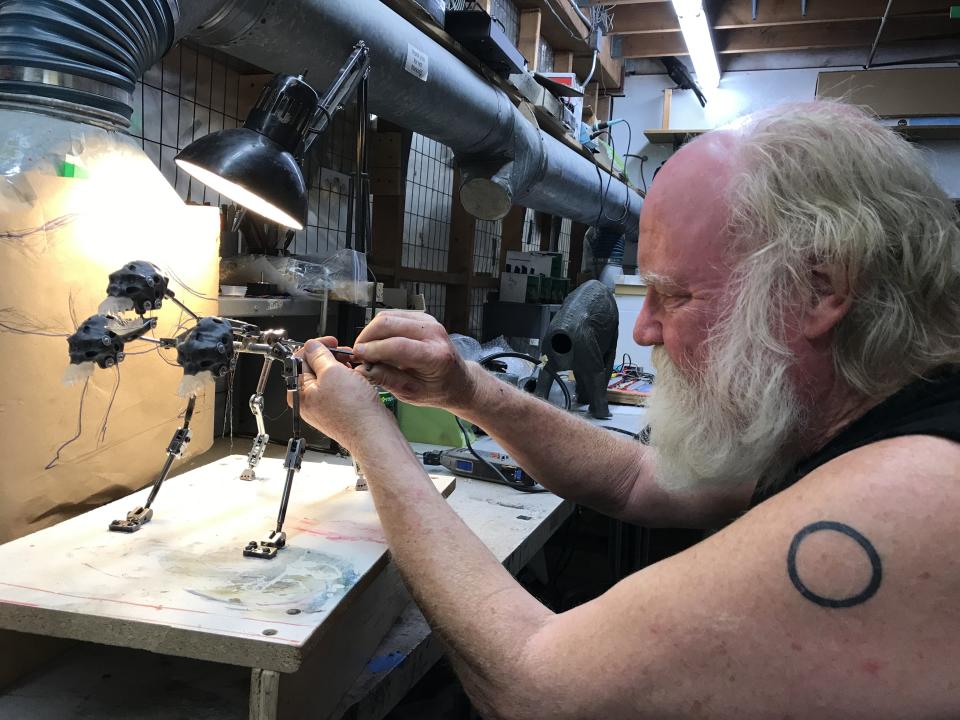Stop-Motion Legend Phil Tippett on the ‘Poker Face’ Episode He Inspired

VFX legend Phil Tippett, whose totally bonkers “Mad God” stop-motion horror film finally got released last year, is a special effects Emmy hopeful this season for an episode of Rian Johnson’s “Poker Face” on Peacock, written and directed by star Natasha Lyonne. He not only contributed old-school monster puppets but also inspired its story about a crusty old stop-motion filmmaker (Nick Nolte). The busy Tippett also supplied hellish cave set designs for Season 3 of “The Mandalorian” (on Disney+).
Both projects came as a result of Tippett’s “Star Wars” fame, which began when he led the ILM animation department for “The Empire Strikes Back.” On the “Star Wars” sequel, he co-developed the “go motion” animation technique (stop-motion with motion blur) and was responsible for the AT-AT Imperial Walkers and the hybrid alien Tauntauns. On “Return of the Jedi,” he won his first Oscar for his creature work; with “Jurassic Park,” he earned his second
More from IndieWire
“I’ve known Rian for some time when he was out here shooting ‘Star Wars: The Last Jedi,'” Tippett told IndieWire. “He came over, we went to our favorite Mexican restaurant, Juan’s, and hung out there for dinner. I got to know him for a bit. So we’re fans of each other. It’s just like certain filmmakers, Rian and Guillermo del Toro and Jon Favreau, we’re cut from the same block of cheese.”
“The Mandalorian” creator Favreau hired Tippett to help with the design of the giant stop-motion “Scrapwalkers” (a variation of the AT-AT) for Season 2’s “The Believer” episode and asked him back to design part of the set design for Season 3’s “The Mines of Mandalore” episode.

“Jon wanted to revisit the walking machines from ‘Empire,'” Tippett said, “and they came up with the idea for this trash walker and distributing them into junk piles. Then Jon had seen ‘Mad God’ and wanted this ‘Mandalorian goes to hell,’ as he called it, section to feel like [my film].” They built the set at 1/35th scale, and Tippett had fun location scouting in VR with the goggles.
The “Poker Face” association began when Johnson wanted to make an episode about stop-motion as a tribute to Tippett (“The Orpheus Syndrome”). Turns out the casting of Nolte was pretty spot on physically, with Tippett even acting as a stand-in for the actor’s hands in most scenes.
“The Orpheus Syndrome” concerns Nolte’s filmmaker being haunted by the accidental on-set drowning of an actress 40 years ago during the making of his last film. It recalls the mysterious drowning of Natalie Wood during the making of “Brainstorm,” directed by VFX guru Doug Trumbull.
“They sent Nick some documentaries about me so he could get the vibe,” Tippett said. “He looked at the documentaries and saw that I had a long beard and wondered why they asked him to cut his beard off. He wanted to be free to do what he wanted, and so I’m pretty sensitive to leaving actors alone. The set was really small and I just wanted to stay out of their way. I pretty much stayed in a video village and watched and talked to other people.”

“I bonded with Natasha, though. We spent a good hour over lunch chatting about everything. We have a lot of similar stories about making things and the damage that one incurs psychologically when you rise to that level or lower yourself to that level of intensity.”
Tippett was given free artistic reign for the episode and provided a monster mash from “Mad God” along with parts of articulated skeletons and other ghoulish creatures, including a creepy Cerberus, a guy with a red light on his head, and a head bursting out of an animal. An entire puppet fabrication team worked on the episode and has been submitted for Emmy consideration along with Tippett. “I sent them close to everything,” he said. “There must’ve been close to a dozen things they peppered around the set.”
Tippett’s thrilled about the thriving state of stop-motion, with Laika and ShadowMachine up in Portland, Aardman’s continued success in the U.K., Wes Anderson’s occasional indie forays, and del Toro’s Oscar-winning debut with his innovative “Pinocchio.”
“It’s gotten a renaissance, kind of a grassroots, I guess you would call it,” he said. “Quite a few people are tired of computer graphics and stop motion is much closer to reality in terms of what you’re dealing with…a real object and there’s real lights. Puppets hundreds of years ago were the spectacle of the day. But then it enters into the sphere where there’s an unreality about it that is just magical. It has a dramatic flair.”
Best of IndieWire
Sign up for Indiewire's Newsletter. For the latest news, follow us on Facebook, Twitter, and Instagram.

